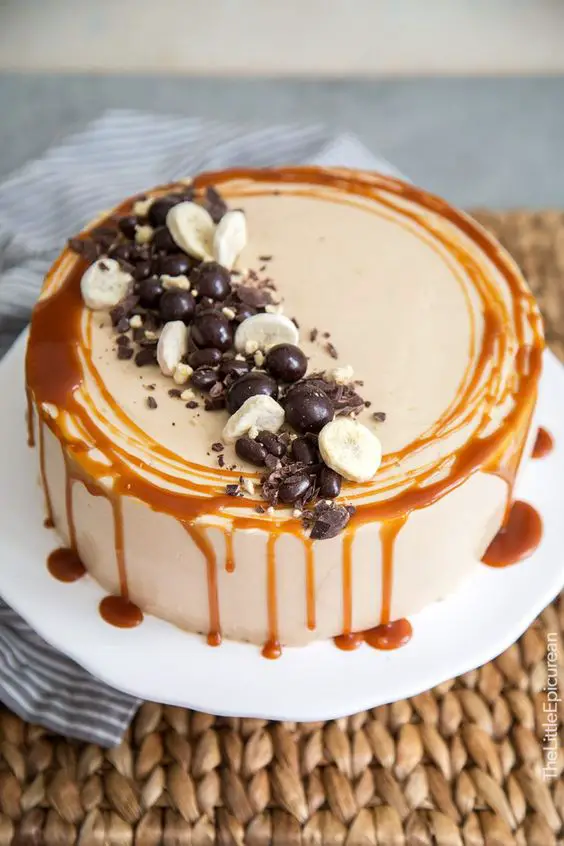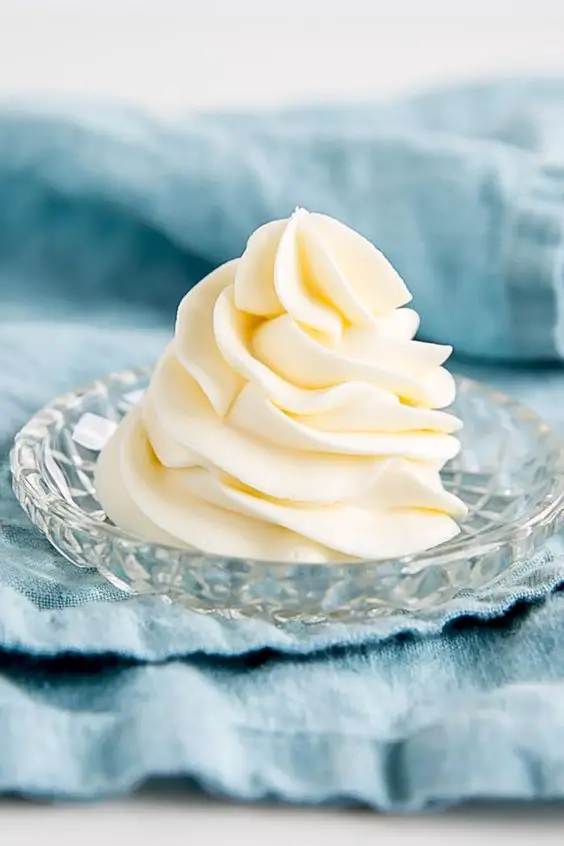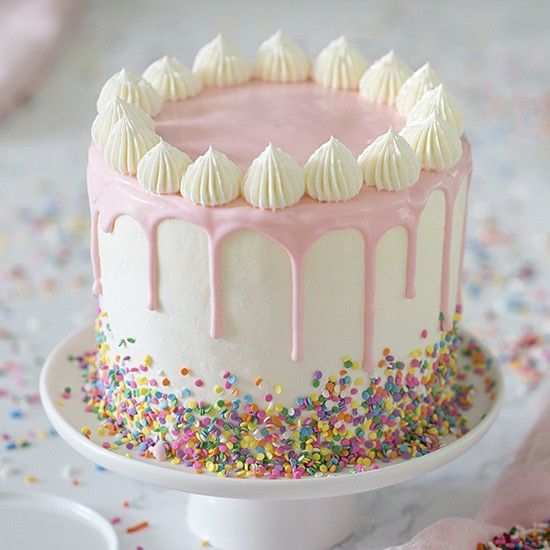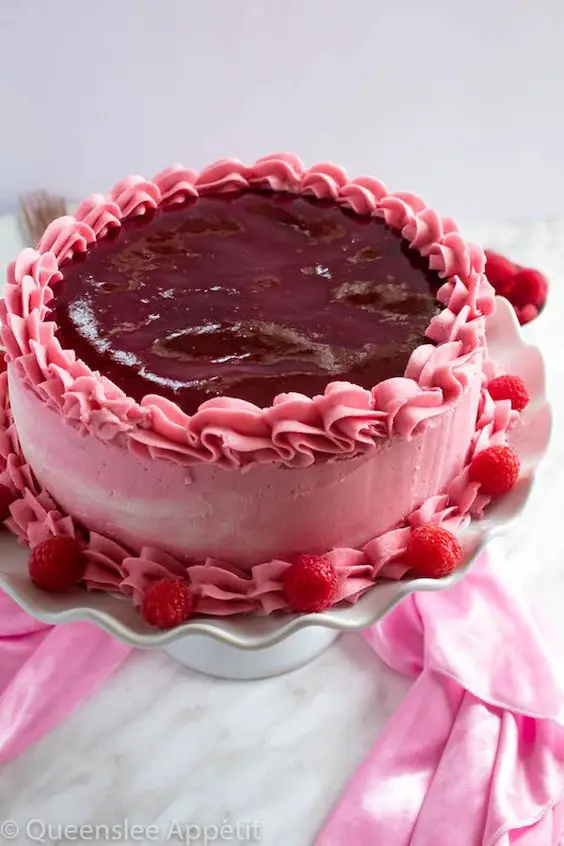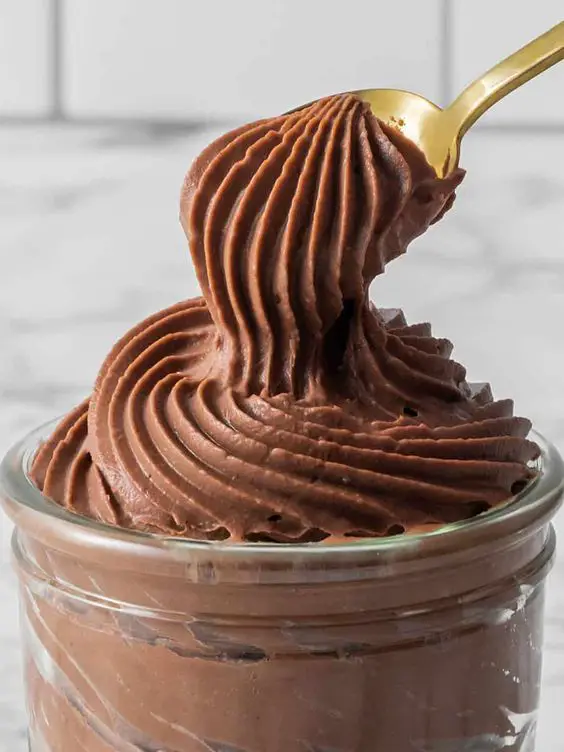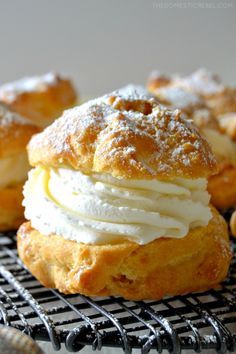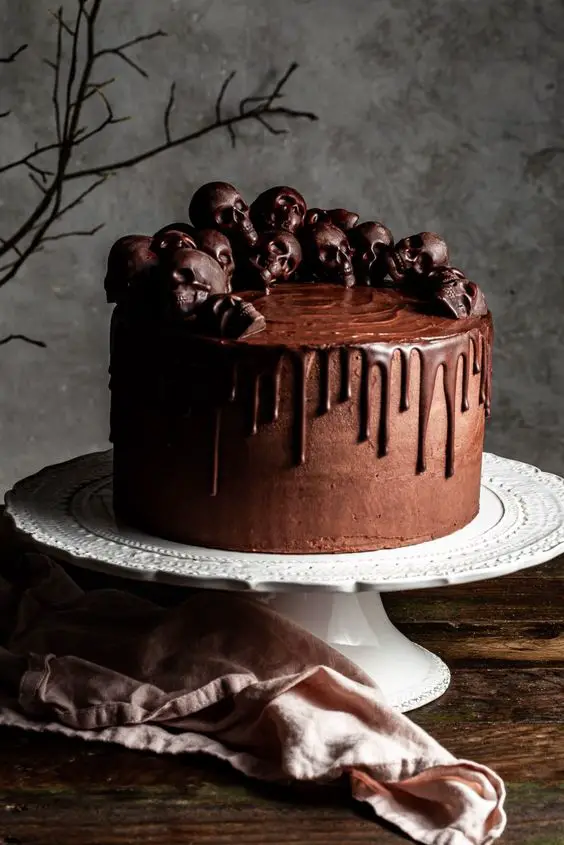Chocolate buttercream is a luscious and indulgent frosting known for its rich chocolate flavor and creamy, velvety texture. This versatile icing is a favorite for topping and filling cakes, cupcakes, and other baked goods, and it’s a must-have for chocolate lovers. Chocolate buttercream is made by blending butter with cocoa powder or melted chocolate, confectioners’ sugar, and sometimes a touch of cream or milk. It can be customized to your desired level of sweetness and darkness, making it perfect for a wide range of desserts. Whether you’re decorating a birthday cake, frosting cupcakes, or filling a layer cake, chocolate buttercream adds a decadent and delightful finishing touch to your sweet creations.
What is Chocolate Buttercream?
Chocolate buttercream is a creamy and decadent frosting that’s beloved for its rich chocolate flavor and smooth, spreadable consistency. It’s a popular choice for icing cakes, cupcakes, cookies, and other baked treats, particularly when you want to infuse a deep chocolate taste into your desserts.
Chocolate buttercream typically consists of the following key ingredients:
- Butter: Unsalted butter is usually used as the base for chocolate buttercream. It should be at room temperature for easy incorporation and a smooth texture.
- Cocoa Powder or Chocolate: The primary source of chocolate flavor. You can use either unsweetened cocoa powder or melted and cooled chocolate. Cocoa powder is more commonly used, while melted chocolate provides a richer flavor.
- Confectioners’ Sugar (Powdered Sugar): This sweetens the buttercream and helps thicken it. The amount can be adjusted to achieve the desired sweetness.
- Milk or Cream: A small amount of milk or cream is added to achieve the desired consistency. This can make the frosting creamier and easier to spread.
- Vanilla Extract: Often included for a subtle flavor enhancement, though it’s optional.
The process of making chocolate buttercream typically involves creaming the butter, adding the cocoa powder or melted chocolate, followed by the confectioners’ sugar and other ingredients, and then mixing until a smooth and creamy frosting is achieved.
Chocolate buttercream can vary in sweetness and consistency depending on personal preferences and specific recipes. It can be used as a frosting to cover cakes, as a filling between cake layers, or as a piping for cupcakes and cookies. Its versatility and delicious chocolate taste make it a favorite choice for dessert decoration and enhancement.

Why you will love Chocolate Buttercream?
Chocolate buttercream is beloved for several reasons, making it a delightful addition to many desserts. Here are some reasons why you might love chocolate buttercream:
- Rich Chocolate Flavor: Chocolate buttercream is incredibly flavorful, with a deep and rich chocolate taste that chocolate enthusiasts adore. It can transform a plain cake or cupcake into a chocolate lover’s dream.
- Smooth and Creamy Texture: It has a velvety and creamy texture that’s perfect for spreading, piping, and decorating. The smooth consistency makes it easy to work with, allowing for beautifully decorated desserts.
- Versatility: Chocolate buttercream is a versatile frosting that can be customized to suit your preferences. You can adjust the level of sweetness and intensity of chocolate flavor to match your taste.
- Enhancement of Desserts: It adds an indulgent and decadent touch to a wide range of desserts. Whether you’re frosting a birthday cake, filling a layer cake, or topping cupcakes, chocolate buttercream elevates the overall taste and appearance of your creations.
- Balanced Sweetness: Chocolate buttercream provides a balanced level of sweetness, complementing the rich chocolate flavor without being overly sugary.
- Familiar and Comforting: Chocolate is a classic and universally loved flavor, making chocolate buttercream a comforting and nostalgic choice that appeals to a wide audience.
- Endless Decorating Possibilities: Whether you’re a professional baker or a home cook, chocolate buttercream allows for endless decorating possibilities. You can create intricate designs, smooth finishes, or simple swirls on your desserts.
- Adaptable Ingredients: It can be made using simple ingredients like butter, cocoa powder or chocolate, confectioners’ sugar, and a bit of milk or cream. This means you likely have the ingredients on hand for impromptu baking sessions.
- Wide Range of Applications: Chocolate buttercream is suitable for a variety of desserts, including layer cakes, sheet cakes, cupcakes, cookies, brownies, and more.
- Crowd-Pleasing: It’s a crowd-pleaser, making it an excellent choice for celebrations and gatherings. Many people simply can’t resist the allure of chocolate buttercream.
Whether you’re an experienced baker or a novice in the kitchen, chocolate buttercream is a fantastic addition to your repertoire of frosting options, and it’s sure to be a hit with anyone who enjoys the wonderful taste of chocolate.
How can I make chocolate buttercream less sweet?
To make chocolate buttercream less sweet, you can adjust the sweetness by reducing the amount of confectioners’ sugar in the recipe or by using alternative ingredients to achieve a balanced flavor. Here are several methods to make chocolate buttercream less sweet:
- Reduce the Confectioners’ Sugar:
- The most straightforward way to reduce sweetness is to use less confectioners’ sugar (also known as powdered sugar or icing sugar) in the recipe. Start by using about 25-50% less sugar than the original recipe calls for, and then adjust according to your taste preferences.
- Use Unsweetened Cocoa Powder:
- If you’re using cocoa powder to flavor your buttercream, ensure that you’re using unsweetened cocoa powder. Sweetened cocoa powder can contribute to excessive sweetness. By using unsweetened cocoa, you can control the sweetness better.
- Balance with Salt:
- A small pinch of salt can help balance the sweetness and enhance the chocolate flavor without making the buttercream taste salty. Add a tiny amount at a time, mix well, and taste until it reaches the desired balance.
- Melted and Cooled Chocolate:
- Consider using melted and cooled chocolate (preferably dark chocolate) in your buttercream. Chocolate provides a more intense, less sugary flavor than cocoa powder. This can be an excellent option if you prefer a richer and less sweet taste.
- Incorporate Espresso or Coffee:
- A small amount of espresso or strong brewed coffee can enhance the chocolate flavor and reduce sweetness. Coffee complements chocolate well and can help cut through the sugar.
- Add a Touch of Vanilla Extract:
- A drop or two of pure vanilla extract can round out the flavor of the buttercream and distract from excessive sweetness.
- Dilute with Unsalted Butter:
- You can add more unsalted butter to dilute the sweetness. Be cautious with this method, as it can affect the consistency of the buttercream.
- Lemon or Citrus Zest:
- A small amount of lemon or citrus zest can provide a contrasting flavor that can offset the sweetness of the buttercream. Be cautious with the amount you add to avoid overwhelming the chocolate flavor.
- Lemon Juice or Citrus Juice:
- A small quantity of lemon juice or citrus juice can add a touch of acidity to counterbalance sweetness. Use it sparingly to avoid making the buttercream too runny.
Remember that when making adjustments to the sweetness, it’s crucial to taste the buttercream as you go along. This way, you can ensure it meets your specific preference for sweetness while still delivering a delightful chocolate flavor. Start with a conservative approach to avoid over-adjusting and end up with a buttercream that’s not sweet enough for your taste.
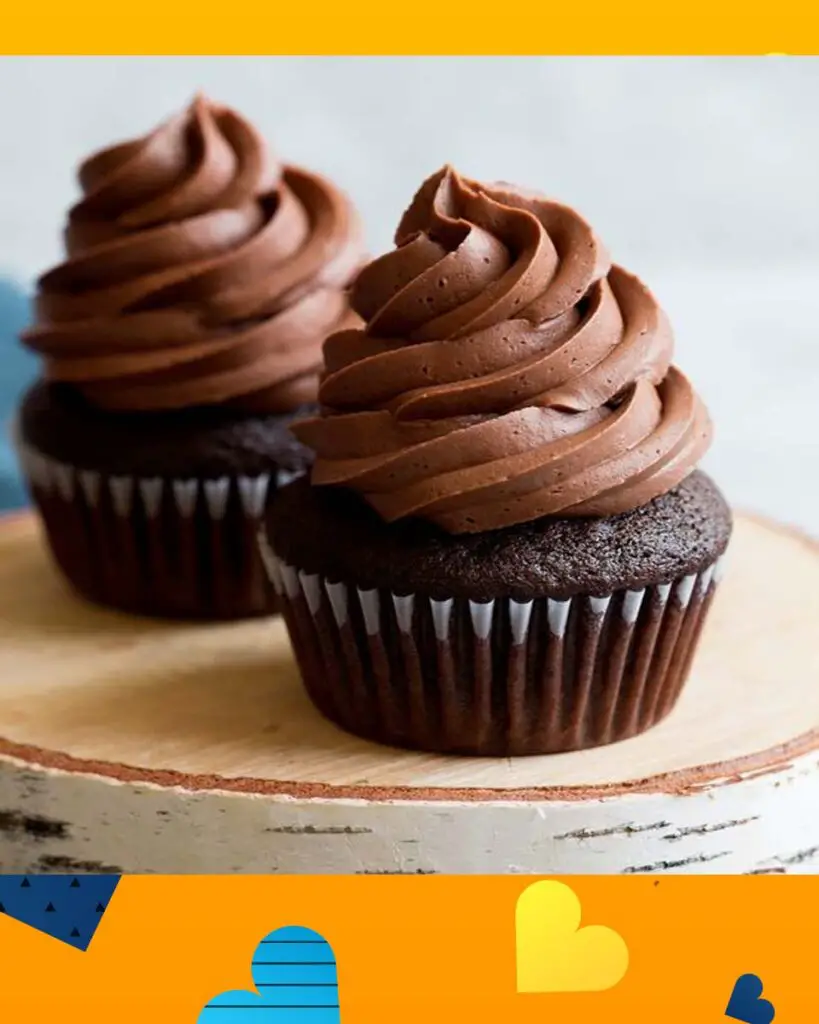
Can I use cocoa powder or melted chocolate in chocolate buttercream?
Yes, you can use either cocoa powder or melted chocolate to flavor chocolate buttercream, and each option offers a different flavor and texture profile. Here’s a brief explanation of each choice:
1. Cocoa Powder:
- Cocoa powder is a popular choice for making chocolate buttercream. It provides a deep chocolate flavor and a smooth, consistent texture. Cocoa powder is typically unsweetened, allowing you to control the sweetness level of the buttercream by adjusting the amount of confectioners’ sugar you use. To use cocoa powder, you can simply sift it to remove lumps and then mix it into the butter and sugar mixture. This option is suitable for those who want a rich, chocolatey flavor without the extra sweetness that comes from melted chocolate.
2. Melted Chocolate:
- Melted chocolate, such as dark chocolate, adds a luxurious and intense chocolate flavor to buttercream. It provides a creamier and slightly denser texture compared to cocoa powder. You can use high-quality dark chocolate with at least 70% cocoa content for a richer taste. To incorporate melted chocolate, allow it to cool to room temperature after melting, and then mix it into the butter and sugar mixture. Melted chocolate can contribute to sweetness, so you might want to reduce the amount of confectioners’ sugar if you’re aiming for a less sweet buttercream.
The choice between cocoa powder and melted chocolate depends on your personal preference and the desired outcome. Both options can result in delicious chocolate buttercream, so you can choose the one that best suits your taste and the particular dessert you’re making.
My chocolate buttercream is too thick. How do I thin it out?
If your chocolate buttercream is too thick and you need to thin it out to achieve the desired consistency for spreading or piping, you can easily adjust it by adding a small amount of liquid. Here’s how to do it:
Ingredients and Equipment:
- Thick chocolate buttercream
- Milk or cream (at room temperature)
Instructions:
- Assess the Thickness:
- Begin by evaluating the thickness of your chocolate buttercream to determine how much thinning is required. Keep in mind that it’s easier to add more liquid gradually than to correct an overly thin consistency.
- Use Milk or Cream:
- Take milk or cream (whole milk or heavy cream) at room temperature. Using room temperature liquid helps prevent temperature shock that can cause the buttercream to seize or curdle.
- Add Liquid Gradually:
- Start by adding a small amount of milk or cream to the buttercream. A tablespoon at a time is a good starting point. The quantity will vary depending on the initial thickness of your buttercream. Be cautious not to add too much liquid at once, as it can quickly make the buttercream too runny.
- Mix Thoroughly:
- After adding the liquid, thoroughly mix the buttercream using an electric mixer or a stand mixer. Start at low speed to avoid splattering and gradually increase to medium or medium-high. Continue mixing until the liquid is fully incorporated, and the buttercream reaches your desired consistency.
- Repeat as Needed:
- If the buttercream is still too thick, you can repeat the process by adding another small amount of milk or cream and mixing until it reaches the desired texture. Continue this step-by-step process until you achieve the ideal consistency for your specific application.
- Adjust Sugar and Flavor:
- Keep in mind that adding more liquid may slightly affect the sweetness and flavor of the buttercream. You can adjust the sweetness by adding a bit more confectioners’ sugar if needed. If necessary, you can also enhance the flavor with additional cocoa powder or melted chocolate to maintain a rich chocolate taste.
By following these steps and being cautious not to add too much liquid too quickly, you can effectively thin out your chocolate buttercream to achieve the desired consistency for decorating or filling your cakes, cupcakes, or other desserts.
My buttercream looks curdled or separated. What should I do?
If your buttercream looks curdled or separated, it may have been caused by various factors, such as temperature differences between ingredients, overmixing, or the butter being too cold or too warm. Don’t worry; you can often fix curdled or separated buttercream. Here’s what to do:
Ingredients and Equipment:
- Curdled or separated buttercream
- Additional room temperature butter (optional)
- Electric mixer or stand mixer
- Warm water (if needed)
Instructions:
- Assess the Situation:
- Examine the curdled or separated buttercream to determine the extent of the issue. If it’s only slightly curdled or if the buttercream is just beginning to separate, it’s more likely to be salvageable.
- Re-Mix at Room Temperature:
- Remove a portion of the curdled buttercream from your mixing bowl and set it aside. If you have extra room temperature butter, add small pieces of it to the curdled buttercream in the mixing bowl.
- Mix Slowly:
- With your electric mixer or stand mixer on low speed, start to mix the butter and buttercream together. Gradually increase the speed to medium as the mixture begins to come together. The additional room temperature butter helps to re-emulsify the mixture.
- Monitor Texture:
- Continue to mix until the buttercream becomes smooth and well combined. This may take a few minutes. If the mixture appears to be coming together but is still slightly separated, that’s okay; you can proceed to the next step.
- Warm Water (If Needed):
- If the buttercream remains stubbornly separated or curdled after mixing with extra butter, you can use a warm water bath to help the butter soften and blend. Fill a bowl with hot tap water and then dip the bottom of the mixing bowl with the curdled buttercream in it for a few seconds. Dry the outside of the bowl, and then mix the buttercream again. The warmth from the water will help the butter soften and re-emulsify.
- Continue Mixing:
- Continue mixing until the buttercream is smooth, silky, and has regained a uniform texture. This may take a bit of time, so be patient.
- Use as Usual:
- Once your buttercream is smooth and uniform, you can use it as intended, whether it’s for frosting a cake, cupcakes, or other desserts.
Remember that it’s often possible to rescue curdled or separated buttercream with the right techniques. The key is to mix it gradually and be patient as you work to bring the mixture back to a smooth and cohesive state.

Chocolate Buttercream Recipe
Ingredients:
- 1 cup (2 sticks or 226g) unsalted butter, at room temperature
- 2/3 cup (80g) unsweetened cocoa powder
- 3 cups (360g) confectioners’ sugar (powdered sugar)
- 1/3 cup (80ml) whole milk or heavy cream, at room temperature
- 1 teaspoon pure vanilla extract
- A pinch of salt (optional, to enhance the flavor)
Instructions:
1. Prepare the Ingredients:
- Ensure the butter is at room temperature, making it easier to cream with other ingredients.
- Sift the cocoa powder and confectioners’ sugar to remove any lumps for a smoother buttercream.
2. Cream the Butter:
- In a large mixing bowl, beat the room-temperature butter with an electric mixer or stand mixer fitted with a paddle attachment. Cream the butter until it becomes light, fluffy, and pale in color, which takes about 2-3 minutes.
3. Add Cocoa Powder:
- Gradually add the sifted unsweetened cocoa powder to the creamed butter. Mix on low speed at first to prevent cocoa powder from flying everywhere, and then increase the speed to medium. Scrape down the sides of the bowl as needed. Continue mixing until the cocoa powder is fully incorporated, and the mixture is smooth and uniform.
4. Incorporate Confectioners’ Sugar:
- Add the sifted confectioners’ sugar to the mixture in several additions, mixing on low speed between each addition. Scrape down the sides of the bowl as needed. Mix until the sugar is fully combined with the butter and cocoa, and the buttercream starts to come together.
5. Add Liquid Ingredients:
- Pour in the room-temperature milk or heavy cream and vanilla extract. Mix on low speed initially to prevent splattering, and then increase to medium speed. Continue to mix until the buttercream becomes smooth and creamy. If the mixture is too thick, you can add a little more milk or cream, a tablespoon at a time, until you reach your desired consistency.
6. Adjust Sweetness and Salt (Optional):
- Taste the buttercream and adjust the sweetness by adding more confectioners’ sugar if needed. If desired, add a pinch of salt to enhance the chocolate flavor and balance the sweetness. Mix well to incorporate any adjustments.
7. Final Mixing:
- Beat the buttercream on medium-high speed for 2-3 minutes until it is airy, smooth, and ready for use. This final mixing step ensures a light and fluffy texture.
8. Use as Desired:
- Your chocolate buttercream is now ready for frosting cakes, cupcakes, or any other dessert of your choice. You can also store it in an airtight container in the refrigerator for later use.
This chocolate buttercream recipe will yield a rich and velvety frosting with a perfect balance of chocolate flavor and sweetness, ideal for your baking and decorating needs.
Nutrition information
The nutrition information for chocolate buttercream can vary depending on the specific recipe and serving size. The following values are approximate and based on a standard recipe for chocolate buttercream using the listed ingredients. Keep in mind that the exact nutritional content can vary based on factors such as the specific brands of ingredients and portion sizes. Here’s an estimation for a 2-tablespoon (about 30g) serving of chocolate buttercream:
- Calories: 150-160 calories
- Total Fat: 11-12 grams
- Saturated Fat: 7-8 grams
- Cholesterol: 30-35 milligrams
- Sodium: 15-20 milligrams
- Total Carbohydrates: 15-16 grams
- Sugars: 14-15 grams
- Protein: 1-2 grams
Chocolate buttercream is a high-calorie and indulgent frosting primarily due to its butter and sugar content. Keep in mind that these values can vary based on the specific recipe you use and any adjustments you make to the ingredients. If you have dietary restrictions or need precise nutritional information, it’s advisable to calculate it based on the exact ingredients and quantities used in your recipe or use online nutritional calculators.
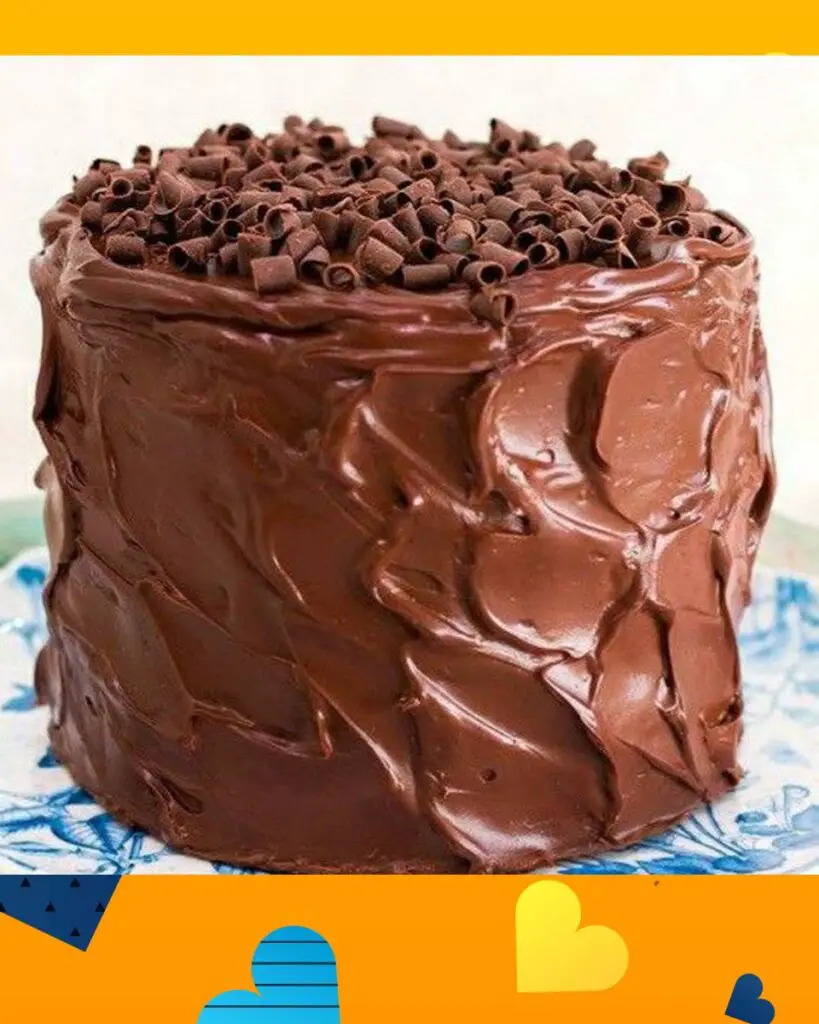
Tips to make perfect Chocolate Buttercream
To make perfect chocolate buttercream, you’ll want to pay attention to various factors in the preparation process. Here are some tips to help you achieve a luscious and flawless chocolate buttercream:
- Use Quality Ingredients:
- Start with high-quality ingredients, including good butter, unsweetened cocoa powder, and pure vanilla extract. Using top-notch ingredients will make a noticeable difference in the flavor and texture of your buttercream.
- Proper Butter Temperature:
- Ensure that the butter is at the right temperature. It should be at room temperature, soft but not melted. This allows for easier creaming and smooth incorporation of other ingredients.
- Sift Dry Ingredients:
- Sift the cocoa powder and confectioners’ sugar to remove any lumps. This helps prevent a gritty texture in your buttercream and ensures even distribution of dry ingredients.
- Gradual Mixing:
- When adding cocoa powder, confectioners’ sugar, and liquid ingredients, do so gradually and mix on low speed at first to avoid creating a cloud of cocoa powder or confectioners’ sugar in your kitchen.
- Scrape Down the Bowl:
- Periodically stop the mixer and scrape down the sides and bottom of the mixing bowl with a spatula to ensure that all ingredients are fully incorporated.
- Consistency Control:
- If your buttercream is too thick, add small amounts of milk or cream, one tablespoon at a time, until it reaches the desired consistency. If it’s too thin, you can add more confectioners’ sugar to thicken it.
- Taste and Adjust:
- Taste your buttercream as you go. If it’s too sweet, you can add more cocoa powder to enhance the chocolate flavor or adjust the sweetness by adding more confectioners’ sugar.
- Balance Sweetness and Salt:
- A pinch of salt can enhance the chocolate flavor and balance the sweetness. If your buttercream is overly sweet, consider adding a tiny amount of salt, and then mix well.
- Final Mixing:
- Beat the buttercream on medium-high speed for a few minutes at the end. This will make it smooth, creamy, and airy.
- Consistency for Decoration:
- Adjust the consistency of your buttercream depending on your intended use. For piping intricate designs, you may want a slightly firmer consistency. For spreading, a softer consistency is ideal.
- Storing Buttercream:
- If you’re not using the buttercream immediately, store it in an airtight container in the refrigerator. Before using, bring it back to room temperature and re-whip for a smooth texture.
- Patience and Practice:
- Perfecting buttercream may require some practice. Don’t be discouraged by minor setbacks; each attempt will bring improvement.
By following these tips and paying attention to detail, you’ll be well on your way to making perfect chocolate buttercream for your cakes, cupcakes, and other desserts.
How to serve
Chocolate buttercream is a versatile and delicious frosting that can be served in various ways to enhance the enjoyment of your desserts. Here are some ideas on how to serve chocolate buttercream:
- Frosted Cakes: Spread a generous layer of chocolate buttercream on top of your cakes. It’s a classic choice for chocolate cakes, but it also pairs well with vanilla, red velvet, or other cake flavors.
- Cupcakes: Use a piping bag and decorating tip to swirl chocolate buttercream onto cupcakes. You can create decorative patterns or simple swirls to make your cupcakes visually appealing.
- Brownies: Spread a thick layer of chocolate buttercream over brownies for an extra layer of sweetness and a delightful contrast to the dense, fudgy brownie texture.
- Cookies: Chocolate buttercream can be used as a filling between two cookies to create cookie sandwiches. It adds a creamy and chocolatey element to your cookie treats.
- Whoopie Pies: Make chocolate whoopie pies by sandwiching chocolate buttercream between two soft cake-like cookies for a sweet, indulgent treat.
- Doughnuts: Fill doughnuts with chocolate buttercream for a luscious surprise inside. Top the doughnuts with additional frosting and sprinkles for added flair.
- Fruit Dipping: Chocolate buttercream can be used as a dip for fresh fruit, such as strawberries, bananas, or apple slices. It complements the natural sweetness of the fruit.
- Layered Desserts: Layer chocolate buttercream in trifles or parfaits with cake, brownies, or cookies for a layered dessert that’s both visually appealing and delicious.
- Pancake and Waffle Topping: For a special breakfast or brunch treat, use a dollop of chocolate buttercream as a topping for pancakes or waffles, along with fresh fruit or syrup.
- Hot Chocolate or Coffee Topping: A spoonful of chocolate buttercream can be a delightful addition to a hot chocolate or coffee. It melts into the beverage, adding creaminess and chocolate flavor.
- Decorative Elements: Use chocolate buttercream to pipe decorative elements on cakes or cupcakes, such as flowers, rosettes, or writing. It’s a beautiful and delicious way to personalize your desserts.
- Dessert Garnish: You can also serve chocolate buttercream as a garnish for other desserts, such as a dollop on top of a slice of pie, cheesecake, or a scoop of ice cream.
- Eating with a Spoon: Sometimes, chocolate buttercream is so delicious that it’s enjoyable on its own, straight from the spoon.
Remember to adjust the consistency of your chocolate buttercream based on your specific serving needs. For spreading, you might prefer a softer consistency, while a slightly firmer consistency is ideal for piping decorative elements. Whether you’re using it as a filling, frosting, or decorative element, chocolate buttercream adds a delightful chocolatey touch to your desserts.
How to store
Storing chocolate buttercream properly is important to maintain its freshness and quality for later use. Here’s how to store chocolate buttercream:
1. Airtight Container:
- Transfer the chocolate buttercream to an airtight container. A food-safe plastic container or a glass container with a tight-sealing lid works well. Make sure the container is clean and dry.
2. Surface Smoothing:
- Before sealing the container, flatten the surface of the buttercream to minimize the air contact. You can use a spatula or the back of a spoon to create a smooth, level surface.
3. Prevent Air Exposure:
- To minimize air exposure, press a piece of plastic wrap directly onto the surface of the buttercream. This creates a protective barrier that helps prevent the buttercream from drying out or forming a crust.
4. Seal the Container:
- Close the airtight container securely to prevent any air from entering. This helps keep the buttercream fresh and free from any off-flavors or odors.
5. Label and Date:
- Consider labeling the container with the date so you can keep track of its freshness. Chocolate buttercream can be stored for several days or even longer if properly handled and refrigerated.
6. Refrigeration:
- Store the airtight container with the chocolate buttercream in the refrigerator. The cooler temperature helps preserve the texture and prevent spoilage. Keep the buttercream in the main part of the refrigerator, not in the freezer compartment.
7. Use within a Reasonable Time:
- Chocolate buttercream can typically be stored in the refrigerator for up to 3-4 days without significant loss of quality. However, it’s best used within a reasonable time to ensure it remains fresh and tasty.
8. Bringing to Room Temperature:
- When you’re ready to use the refrigerated chocolate buttercream, take it out of the refrigerator and allow it to come to room temperature for about 30 minutes to an hour. Then, give it a good mix to restore its smooth, spreadable consistency before using it for frosting or decorating.
By following these storage guidelines, you can enjoy chocolate buttercream over multiple days or even weeks, depending on your usage. Proper storage helps maintain its taste and texture, making it a convenient and delicious addition to your baked goods whenever you need it.
FAQ’s
- How can I make chocolate buttercream less sweet?
- To make chocolate buttercream less sweet, you can reduce the amount of confectioners’ sugar in the recipe. Start by adding less sugar than the recipe suggests and then adjust to your taste. You can also balance the sweetness with a pinch of salt, which can enhance the chocolate flavor.
- Can I use cocoa powder or melted chocolate in chocolate buttercream?
- Yes, you can use either cocoa powder or melted chocolate to flavor your chocolate buttercream. Cocoa powder is more commonly used, but melted and cooled chocolate provides a richer, more intense chocolate flavor.
- My chocolate buttercream is too thick. How do I thin it out?
- If your chocolate buttercream is too thick, you can gradually add small amounts of milk or cream while mixing until it reaches your desired consistency. Be cautious not to add too much liquid at once to avoid making it too thin.
- My buttercream looks curdled or separated. What should I do?
- If your buttercream appears curdled or separated, it may be due to ingredients being too cold or too warm. To fix it, try warming the bowl slightly by using a kitchen towel soaked in hot water and wrapped around the base. Then, continue mixing until it comes together.
- Can I make chocolate buttercream in advance and store it?
- Yes, you can make chocolate buttercream in advance and store it in the refrigerator for a few days. Make sure to place it in an airtight container to prevent it from absorbing odors. When ready to use, allow it to come to room temperature and then re-whip to restore its smooth texture.
- How do I color chocolate buttercream for decorating?
- You can color chocolate buttercream by using gel food coloring. Be cautious about adding too much liquid food coloring, as it can affect the consistency of the buttercream. Add color gradually and mix until you achieve the desired shade.
Troubleshooting:
- Grainy Texture: If your chocolate buttercream turns out grainy, it might be due to the cocoa powder or chocolate not being fully dissolved. Ensure you sift the cocoa powder to remove lumps, and if you’re using melted chocolate, make sure it’s completely cooled before incorporating it.
- Too Soft or Runny: If the buttercream is too soft or runny, it could be because the butter was too soft when you started. Place it in the refrigerator for a short time to firm up and then re-whip it.
- Air Bubbles: Air bubbles in the buttercream can cause uneven surfaces when decorating. To avoid this, you can tap the bowl of buttercream on the counter to release air bubbles or use a spatula to smooth it out while decorating.
- Bitter Taste: If the buttercream tastes bitter, it might be because of over-processed cocoa powder or using cocoa powder with a high cocoa content. To balance the bitterness, you can add a touch more sugar or some vanilla extract.
By addressing these FAQs and troubleshooting tips, you can achieve a perfect chocolate buttercream every time and have a smooth and delicious frosting for your baked goods.
Happy baking!


